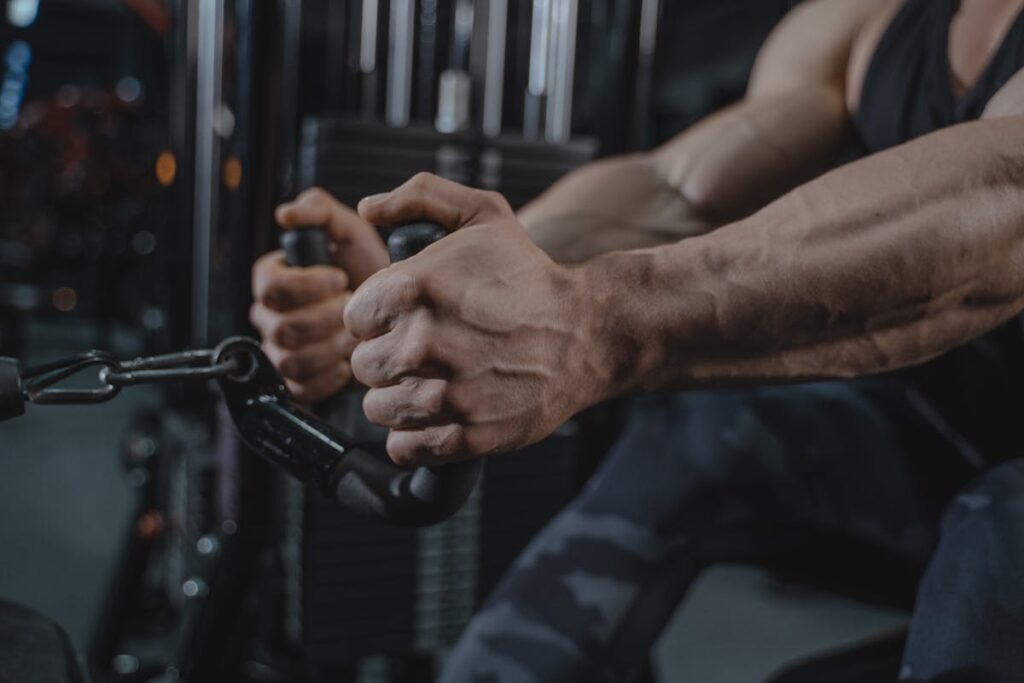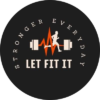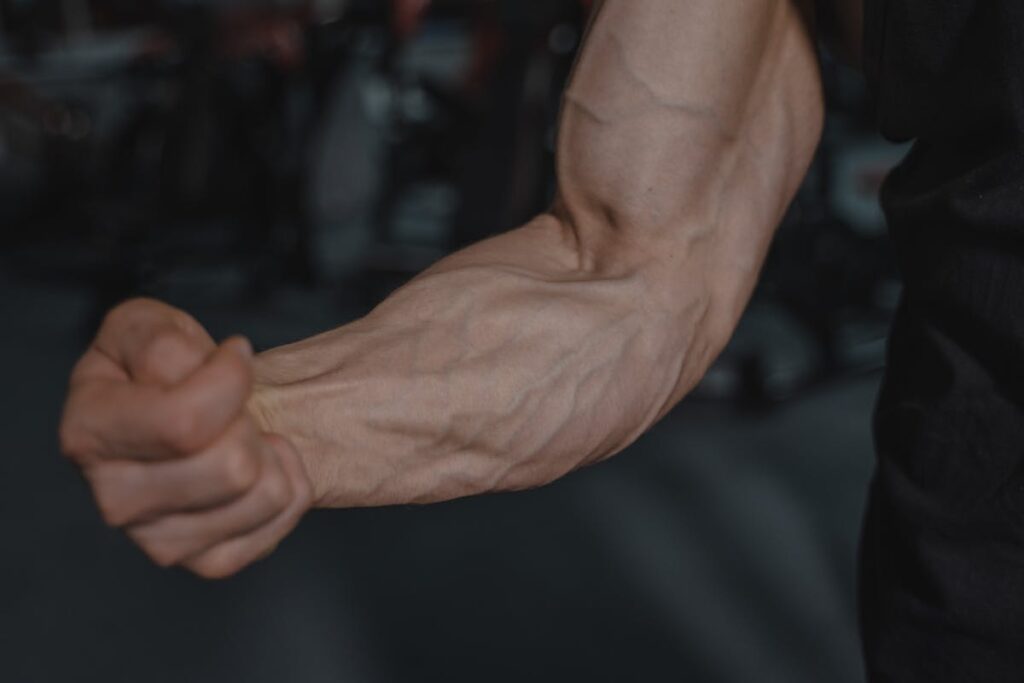let’s cut the fluff and get real. Everyone brags about big arms, right? Guys chase the pump on biceps day like it’s a religion. Triceps get their love too, because they make up most of your arm size. But the forearms? Totally ignored. And that’s crazy when you think about it. Think about it almost anything you do with your upper body drags your forearms into the mix. Lifting, carrying, even just holding onto stuff during a forearm workout. They never really get a break.
Think about it for a second. Grip a barbell? That’s forearms. Carry your groceries without feeling like your fingers are about to snap off? Forearms. Want to hold your bodyweight on pull-ups or deadlifts without slipping? Yep… forearms again. However, most people choose not to train them directly, believing that they will naturally become stronger. Not at all, spoiler alert.
So, let’s fix that. I’m going to walk you through the ultimate forearm workout, the kind that not only builds real strength but also makes your arms look carved, defined, and powerful. Because let’s be honest: nothing looks more badass than rolling up your sleeves and showing a pair of thick, ropey forearms.
Why Forearm Workouts Actually Matter (More Than You Think)
Here’s the brutal truth: you can have the biggest biceps in the room, but if your grip gives out, you’re not moving anything heavy. Deadlifts? Done. Pull-ups? Nope. Even bench pressing feels sketchy if your wrists and grip aren’t stable.
Your forearms are like the unsung hero of your upper body. They connect strength from your hands to the rest of your muscles. Without them, all that power just leaks away. It’s like owning a sports car with flat tires; it looks good, but useless on the road.
And here’s something nobody talks about: forearms aren’t just about lifting. They’re about life. Typing on a keyboard all day? That’s repetitive forearm work. Hauling boxes during a move? That’s forearms screaming at you. Playing sports? Swinging a bat, holding a racket, throwing a punch… yeah, all forearms.
So if you’re still sleeping on forearm workouts, don’t be surprised when your grip fails before your muscles do. Strong forearms mean endurance, real-world strength, and yes, a visual edge. Let’s be real, forearm veins popping under the skin? That’s instant respect in the gym.
The Forearm Workout You Actually Need
Alright, time to roll up your sleeves. Forget complicated machines or gimmicky gear. A proper forearm workout doesn’t need much, just dumbbells, a barbell, maybe a towel, and some grit. Here’s the arsenal:
1. Wrist Curls (The Classic Starter)
Simple? Yes. Effective? Absolutely. Sit down, place your forearms palms up on your thighs, and pick up a pair of dumbbells. Slowly drop your wrists after curling them upward. Don’t hurry. The weights should not be tossed around like a hot potato. Control is everything here.
Do enough sets, and your forearms will light up. Trust me, the burn is real.
2. Reverse Wrist Curls (Balance It Out)
Now, flip it. Palms facing down this time. Same setup, same curling motion. Why bother? Because you don’t want muscle imbalance. Strong flexors without strong extensors is asking for trouble (and possible injuries). Plus, balanced forearms just look better.
3. Farmer’s Walk (Grip of Steel)
This is one of those moves that’s almost too simple. Pick up heavy dumbbells or kettlebells. Stand tall. Walk. That’s it. No tricks, no fancy form cues. Just keep your core tight, shoulders back, and don’t let the weights slide out of your hands.
You’ll feel it not just in your forearms, but all over your traps, abs, even legs. It’s raw, functional strength. And nothing screams power like carrying heavy weight with ease.

4. Towel Pull-Ups (For the Brave)
Want a forearm workout that humbles you fast? Try towel pull-ups. Loop a towel over a bar, grab the ends, and pull yourself up. It’s way harder than regular pull-ups because the towel shifts and forces your grip to work overtime.
Most people can’t get more than a few reps. And that’s fine. The struggle is what makes your forearms grow.
5. Wrist Roller (The Old-School Killer)
Ever seen one of those sticks with a rope and weight hanging off it? That’s a wrist roller. Roll the weight up, then lower it back down, repeat. Doesn’t sound tough until your forearms are on fire halfway through.
If you don’t own one, you can make one with a bar, some rope, and a plate. Old-school, cheap, brutal.
How Often Should You Train Your Forearms?
Good question. Don’t go overboard. Your forearms are involved in so many other lifts already that blasting them every day is just asking for sore hands and aching wrists.
It’s sufficient to do so two or three times a week. Strike them hard, wait for them to recover, then strike them once more.. And remember: even on back day or arm day, your forearms are getting work. So think of direct forearm training as “extra credit” that builds the foundation.
Tips to Maximize Your Forearm Workout
A few golden rules if you want serious results:
- Don’t use straps too often. Your forearms never develop stronger if you constantly rely on lifting straps, even though they do aid with heavier pulls. Save them for your max sets.
- Train grip variations. Thick bars, fat grips, or even just wrapping a towel around a dumbbell handle forces your forearms to adapt.
- Stretch your forearms. Mobility isn’t discussed here, but you’re limiting your strength if your wrists feel like rusty hinges. Stretching briefly before and after is quite beneficial.
- Progressive overload matters. If you want to gain muscle, you must increase the weight, repetitions, or time under tension, just like you would with any other muscle. Don’t wonder why nothing changes after a year of curling the same 10-pound dumbbells.
The Aesthetic Side: Why Defined Forearms Look So Good
Let’s be real, strength is awesome, but aesthetics matter too. Defined forearms make your whole arm look bigger, even if your biceps aren’t massive. When veins start running across your forearms, it screams discipline. It shows you don’t just lift; you train.
And honestly, it changes how clothes fit. Your arms appear stronger when you roll up your sleeves. The contrast between a slender wrist and broad forearms simply stands out when you wear a T-shirt. Despite its subtlety, people pay attention.
Short Head Bicep Exercises vs. Forearm Training
Now, here’s something interesting: a lot of lifters confuse forearm training with biceps training. They think hammer curls or reverse curls will cover it all. And while those moves do hit the forearms a little, they’re not enough.
Short head bicep exercises like concentration curls or wide-grip curls build peak on the biceps, not grip strength. That is the distinction. If you want arms that are not just large but also balanced and useful, you need both. So don’t replace one with the other. Pair them together for the full package.
Real-Life Benefits You’ll Notice
Here’s what happens once you commit to forearm workouts:
- Lifting feels easier. Deadlifts, rows, even bench press… You just feel locked in.
- Daily life is smoother. Groceries, luggage, moving furniture, suddenly it’s no big deal.
- Sports performance improves. Whether it’s boxing, tennis, rock climbing, or baseball, grip strength translates everywhere.
- Self-confidence soars, as mental health deserves the spotlight every single day. You feel invincible as you roll up your sleeves and reveal those forearms, despite the subtlety of it.
The Ultimate Forearm Workout Routine (Sample Plan)
This is an easy routine that you can run two or three times a week. Continue as usual and see the results:
- Wrist Curls – 3 sets of 12-15
- Reverse Wrist Curls – 3 sets of 12-15
- Farmer’s Walk – 3 rounds, 40-60 seconds each
- Towel Pull-Ups – 3 sets to failure (or as many reps as possible)
- Wrist Roller – 3-4 rounds, up and down equals one
Progress weekly. Add weight, reps, or time. Stick to it, and your grip strength will transform.
Final Thoughts
Here’s the bottom line: stop neglecting your forearms. They’re not some “extra” muscle group; they’re the foundation for real strength. Strong forearms mean stronger lifts, better daily function, and arms that actually look complete.
Don’t be the guy with huge biceps but a weak grip. Don’t be the lifter who straps up for every set because their forearms can’t hang. Instead, be the person who walks into the gym, grabs a heavy bar, and owns it.
Look, just hit your forearms properly and give it a couple months. You’ll feel it when you grab the bar and it doesn’t slip, when you’re carrying heavy bags without stopping every five steps, and yeah, even when you catch yourself flexing in the mirror after rolling up your sleeves. It won’t happen overnight, but it creeps up on you. One day you realize, ‘damn, my grip’s solid now.’ That’s when you know the work’s paying off.


Pingback: Bodyweight Back Exercises: No-Excuse Guide to Building a Strong, Pain-Free Back
Pingback: How to Improve Grip Strength: A Guide to Stronger Hands - Let fit it